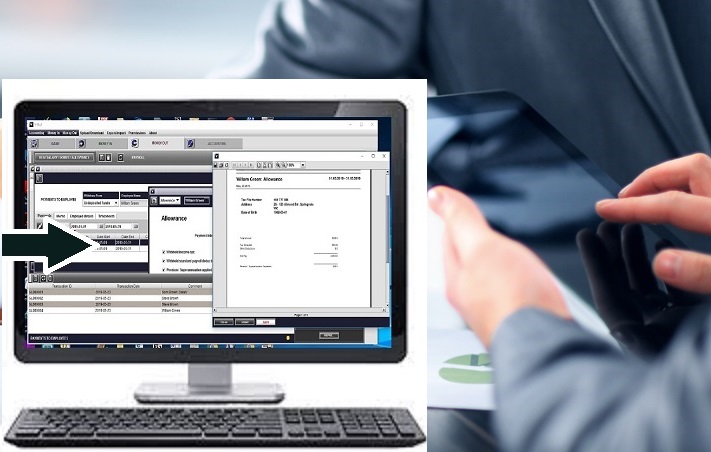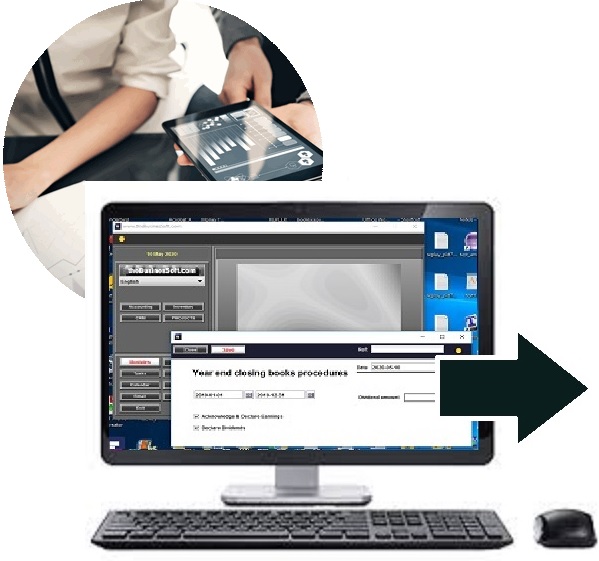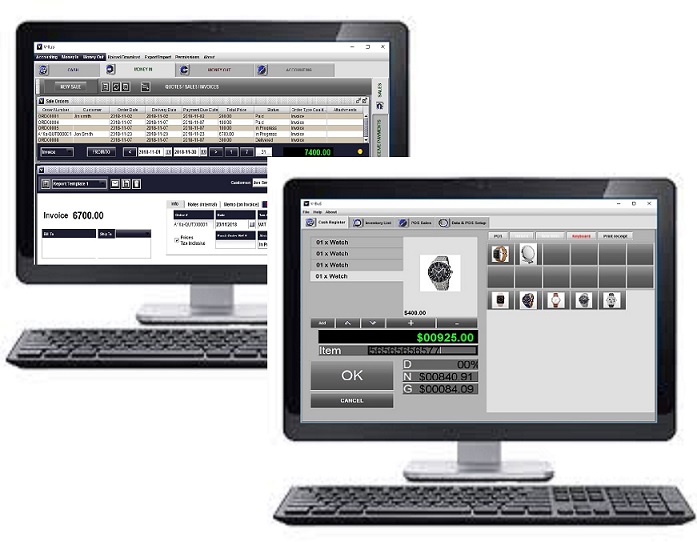FOR ACCOUNTANTS
The system can be used in the clients' premises or similar to a cloud accounting system: the clients' data uploaded into the accountant's application
GAAP AND IFRS COMPLIANT FEATURES
Generally accepted accounting principles (GAAP)
The system supports Generally accepted accounting principles (GAAP) for the different countries. This is achieved based on the flexible configuration of the system.
Managerial accounting
Financial & tax accounting
Inventory control & manufacturing
Payroll: income tax installments, deductions, superannuation,
International Financial Reporting Standards (IFRS)
In addition to the standard accounting functions, the system provides some additional (optional) features, which makes it basically compliant with International Accounting Reporting Standards for Small and Medium entity (IFRS SME).
The specific features of IFRS procedures, compared to generally accepted accounting practices for each particular country, are related to the analysis of the company actual financial standing in the market environment, rather than just recording the movement of assets related to the company financial activity. The IFRS supporting functionality consists of
1.1 Statement of comprehensive income
The report has a meaning similar to the Profit Loss statement with a slightly different presentation of income and expenses categories
1.2 Statement of cash flow
The actual cash flow for the company
1.3 Statement of financial position
The list of assets and liabilities of the company, which also indicates current and non-current assets and liabilities
Data quality & integrity: special provisions
The system provides an option to set the stringent procedure for registering the transactions.
1. In case if Maintain transactions audit log option is set, each transaction is specially registered in the log table in addition to inserting the record General Ledger. The records in the log file have a sequence number, the time stamp, and the encrypted signature so that the transaction cannot be back-dated or modified without an instant indication of discrepancy in the log table.
The transaction cannot be simply deleted from the system. Instead of deletion, the system will cancel the sale or the purchase the transaction with the appropriate cancellation record inserted in General Ledger. If the transaction or any of its details has been recorded by mistake, the user needs to create a separate transaction in General Ledger as a correction. This is the rigorous accounting procedure, which is conducted to ensure the validity of the data. No changes to the financial data can be made by the user without being recorded into the log by the software application. Though implemented electronically, it is similar to the maintenance of traditional paper-based accounting books, where the records cannot be cleaned up or erased.
If commenced, the logging procedure cannot be interrupted or stopped by the user. In case if the data is totally reset, the appropriate record is inserted into the log. The log records created before the data reset are still kept, though marked as related to invalid transactions.
The books can be presented for audit with the validity and integrity of the data, which is ensured by the software application. This may be the legal requirement in some countries.
2. In case if Maintain transactions audit log option is not set, transactions are not registered in the log table. The transaction (e.g a sale or purchase) can be deleted in case if recorded by mistake. This is a much simpler accounting procedure, which can be used if the software system will not be presented for audit.
Exchange of the data between the business and accountant's desktop systems
The data from the client's desktop application can be exchanged with the accountant's desktop application
This gives an option to work with the client's data on the accountant's computer outside of the client's premises. The processed data can be downloaded back to the client's computer
This is the functionality similar to provided by the cloud accounting systems, though technically is implemented without the use of the cloud. The exchange of the data is conducted as a B2B data-feed mechanism.
| FINANCIAL & MANAGERIAL ACCOUNTING: SPECIAL FEATURES | VIDEO GUIDES | USER GUIDE (PDF) | DOWNLOAD: PC |
|
Special features
|
| DOING ACCOUNTING JOBS FOR YOUR CLIENTS |
| ||

|

| |
|
| |

|

|
|
The system can be used in the clients' premises or similar to a cloud accounting system: the clients' data uploaded into the accountant's application
| FLEXIBLE CONFIGURATION: SUPPORTS ALL STANDARD ACCOUNTING TASKS FOR A SME |
| QUALITY AND INTEGRITY OF THE DATA |
Generally accepted accounting principles (GAAP)
The system supports Generally accepted accounting principles (GAAP) for the different countries. This is achieved based on the flexible configuration of the system.

|

|

|

|
| SPECIAL FEATURES |
In addition to the standard accounting functions, the system provides some additional (optional) features, which makes it basically compliant with International Accounting Reporting Standards for Small and Medium entity (IFRS SME).
The specific features of IFRS procedures, compared to generally accepted accounting practices for each particular country, are related to the analysis of the company actual financial standing in the market environment, rather than just recording the movement of assets related to the company financial activity. The IFRS supporting functionality consists of
- Standard IFRS reports
- Automatic maintenance of the list of General Ledger accounts, which are needed to provide IFRS reporting
- Facilities to evaluate the company financial position within the existing market environment by reevaluating the capital assets based on their market value.
1.1 Statement of comprehensive income
The report has a meaning similar to the Profit Loss statement with a slightly different presentation of income and expenses categories
1.2 Statement of cash flow
The actual cash flow for the company
1.3 Statement of financial position
The list of assets and liabilities of the company, which also indicates current and non-current assets and liabilities
Data quality & integrity: special provisions
The system provides an option to set the stringent procedure for registering the transactions.
1. In case if Maintain transactions audit log option is set, each transaction is specially registered in the log table in addition to inserting the record General Ledger. The records in the log file have a sequence number, the time stamp, and the encrypted signature so that the transaction cannot be back-dated or modified without an instant indication of discrepancy in the log table.
The transaction cannot be simply deleted from the system. Instead of deletion, the system will cancel the sale or the purchase the transaction with the appropriate cancellation record inserted in General Ledger. If the transaction or any of its details has been recorded by mistake, the user needs to create a separate transaction in General Ledger as a correction. This is the rigorous accounting procedure, which is conducted to ensure the validity of the data. No changes to the financial data can be made by the user without being recorded into the log by the software application. Though implemented electronically, it is similar to the maintenance of traditional paper-based accounting books, where the records cannot be cleaned up or erased.
If commenced, the logging procedure cannot be interrupted or stopped by the user. In case if the data is totally reset, the appropriate record is inserted into the log. The log records created before the data reset are still kept, though marked as related to invalid transactions.
The books can be presented for audit with the validity and integrity of the data, which is ensured by the software application. This may be the legal requirement in some countries.
2. In case if Maintain transactions audit log option is not set, transactions are not registered in the log table. The transaction (e.g a sale or purchase) can be deleted in case if recorded by mistake. This is a much simpler accounting procedure, which can be used if the software system will not be presented for audit.
Exchange of the data between the business and accountant's desktop systems
The data from the client's desktop application can be exchanged with the accountant's desktop application
This gives an option to work with the client's data on the accountant's computer outside of the client's premises. The processed data can be downloaded back to the client's computer
This is the functionality similar to provided by the cloud accounting systems, though technically is implemented without the use of the cloud. The exchange of the data is conducted as a B2B data-feed mechanism.
